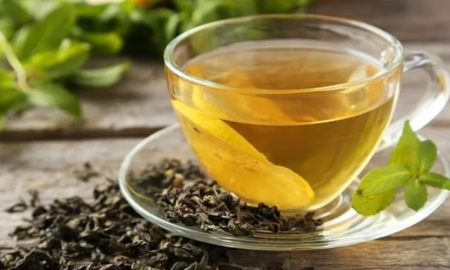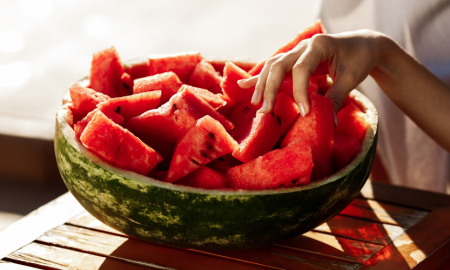
Why Are Experts Concerned About Kids Eating Baby Food Pouches?

In the aisles of grocery stores, a remarkable trend has emerged in recent years—baby food pouches are flying off the shelves at an astonishing rate. Parents across the nation are increasingly relying on these convenient, easy-to-use packages to feed their little ones. But while these pouches offer undeniable convenience, experts are raising important questions about their impact on children’s nutrition and development.
A Convenient Choice for Busy Families
Every week, countless parents find themselves stocking up on food pouches, drawn to their practicality and portability. The pouches allow toddlers to enjoy meals or snacks independently, reducing the need for spoon-feeding and cleanup. The appeal is clear: they’re easy to pack in diaper bags, won’t shatter like glass jars, and can be consumed quickly during busy days or on the go.
For many families, pouches have become a staple. Take, for instance, a parent who routinely spends around $200 a month on various pouches, ensuring her children have access to a mix of pureed fruits, vegetables, and other options. The appeal lies not just in convenience but in the way these products simplify meal planning. However, the question arises: what nutritional value do these pouches actually provide?
An Explosion in Popularity

Instagram | choomee | Health experts caution that overusing pouches can limit nutrition and harm oral hygiene.
The statistics are striking. Since 2010, sales of baby food pouches have skyrocketed by 900%, surpassing traditional jarred purees. This growth reflects a shift in how parents view baby food; no longer is it just for infants transitioning to solid foods. Pouches are now being marketed toward toddlers and even older children, prolonging the use of pureed foods well beyond the initial stages of eating solids.
While the occasional pouch can fit into a balanced diet, concerns are growing regarding their overuse. Health professionals warn that excessive reliance on pouches may hinder nutritional diversity, affect oral hygiene, and even impact a child’s speech development. It’s vital for children to experience a range of textures and flavors to establish healthy eating habits early on.
Understanding What’s Inside
The contents of these pouches can vary widely. Some feature a simple blend of fruits, while others include grains, vegetables, or even meats. Unfortunately, many pouches marketed as “healthy” options may contain added sugars or other additives that parents might not expect. A 2019 study revealed that pouches often have significantly higher sugar content than other forms of baby food.
As pediatricians highlight, relying too heavily on these purees can create food aversions. Some children may become so accustomed to the smooth, sweet flavors that they reject whole fruits and vegetables. The long-term effects could lead to nutritional deficiencies and poor eating habits.
Key Concerns for Parents:
1. Nutritional Imbalance – Pouches can lack the variety needed for a well-rounded diet.
2. Food Preferences – Over-reliance on pureed foods may lead to aversions to more complex textures.
3. Oral Health Issues – The way purees adhere to teeth can increase the risk of cavities.
4. Developmental Delays – Lack of exposure to different textures may hinder speech and motor skills development.
The Marketing Behind Pouches
Marketing plays a significant role in the popularity of baby food pouches. Labels touting “organic,” “all-natural,” and “packed with vegetables” can be misleading. Parents often find themselves trusting the marketing without fully understanding the nutritional value of what they’re purchasing. A pouch labeled as “turkey dinner” might primarily contain applesauce with minimal turkey, which is not what many parents envision when selecting a nutritious meal for their children.
The appeal of these products is undeniable, particularly for parents of picky eaters. The convenience of pouches makes them a go-to option, especially when introducing solids or transitioning to table food.
Finding Balance in Baby Food Choices
While pouches can be part of a balanced diet, experts emphasize that they should not dominate a child’s meals. It’s essential to introduce a variety of whole foods early in life. Whole fruits, vegetables, and proteins should be the primary staples, helping children learn to chew and appreciate different flavors and textures.
By around 12 months, most children can transition away from pureed foods and start enjoying table food alongside their families. Introducing a range of textures helps develop essential chewing skills and encourages a healthier relationship with food. In fact, research shows that if children do not encounter different textures by 10 months, they may struggle with food acceptance later on.
Tips for Parents:
1. Incorporate Whole Foods – Aim for a mix of pureed foods and whole options like soft fruits and vegetables.
2. Gradual Transition – Encourage progression from purees to more textured foods as your child grows.
3. Meal Time Together – Involve children in family meals to normalize a variety of foods.
The Importance of Sensory Experience
Eating is a sensory experience. Messy hands, splattered food, and the act of using utensils are all integral to developing a child’s motor skills and enjoyment of food. The process of learning to eat involves more than just swallowing; it includes the joy of exploration and discovery. Children benefit from engaging with food using all their senses, helping them form positive associations with mealtime.
Encouraging exploration of food textures can be a game-changer. This includes allowing children to touch, smell, and taste a wide variety of foods. Messy eating may be a challenge for parents, but it plays a crucial role in fostering a healthy attitude towards food.
Rethinking Toddler Nutrition

Freepik | Idea24rich | While pouches offer convenience, it’s crucial to balance them with whole foods for lasting health.
As parents navigate the evolving landscape of toddler nutrition, it’s crucial to remember that they don’t need special foods to thrive. With careful planning, young children can enjoy the same meals as the rest of the family, provided that the food is safe and suitable for their developmental stage.
Pouch products have carved out a lucrative niche in the baby food market, but the question remains – are they the best choice for young children? Moderation is key. While the convenience of pouches is undeniable, balancing them with whole foods is essential for long-term health.
Understanding Toddlers’ Nutritional Needs
1. Whole Foods – Prioritize fruits, vegetables, grains, and proteins.
2. Diverse Textures – Introduce a variety of food textures to promote acceptance.
3. Family Meals – Foster a sense of community and normalcy by sharing meals.
The Future of Baby Food
As the baby food market continues to evolve, parents will need to stay informed about the nutritional value of the products they choose. Awareness of marketing tactics and ingredient transparency is crucial in making the best choices for their children. With ongoing research and expert recommendations, parents can navigate the world of toddler nutrition more effectively, ensuring that their children develop healthy eating habits that last a lifetime.
While baby food pouches offer convenience, they should complement a broader diet rich in whole foods. As families adapt to modern parenting challenges, the goal remains clear: nurturing happy, healthy children through informed nutrition choices. With a balanced approach, parents can set their children up for a lifetime of healthy eating habits.
More in Diet
-
`
Fat Jabs May Cure Cocaine Addiction and Boost Heart Health, New Study Finds
What if the same jab that helps you lose weight could also help you kick a cocaine habit? Sounds wild, but...
September 21, 2025 -
`
Dwayne Johnson Shocks Fans With Dramatic Weight Loss Transformation
Dwayne “The Rock” Johnson stunned the crowd at the 2025 Venice Film Festival with a slimmer look that set social media...
September 20, 2025 -
`
Dwayne ‘The Rock’ Johnson Stuns Fans With Slimmed-Down MMA Fighter Look
Dwayne ‘The Rock’ Johnson isn’t just flexing muscles anymore. In “The Smashing Machine,” Dwayne Johnson strips down the bulk, sheds his...
September 13, 2025 -
`
Here’s How Fat-Blocking Green Tea Microbeads May Aid Weight Loss
Scientists are exploring an innovative way to reduce fat absorption in the body—tiny edible beads made with green tea, vitamin E,...
September 12, 2025 -
`
Why the Heart Is Slightly to the Left and Not Perfectly Centered
The heart is one of the most vital organs in the body, yet its placement often raises questions. Many assume it...
August 16, 2025 -
`
Ozzy Osbourne’s Most Shocking and Beloved Pop Culture Moments
Few figures in rock history have carved out a legacy as vivid and unpredictable as Ozzy Osbourne. Beyond his groundbreaking work...
August 10, 2025 -
`
Are Mono Diets Worth It – or Just a Dangerous Trend?
As summer brings on the pressure to slim down fast, the internet lights up with diet trends promising instant results. One...
August 3, 2025 -
`
Why Motivation Is Essential for Sustainable Fitness Success
Motivation isn’t something that shows up when it’s convenient—it’s something that needs to be built, shaped, and sustained. Many people struggling...
July 27, 2025 -
`
The Mystery of Human Body Parts That Science Still Can’t Solve
The human body is a patchwork of evolutionary choices, quirks, and mysteries. From skeletal structure to the tiniest gland, everything tells...
July 18, 2025










You must be logged in to post a comment Login